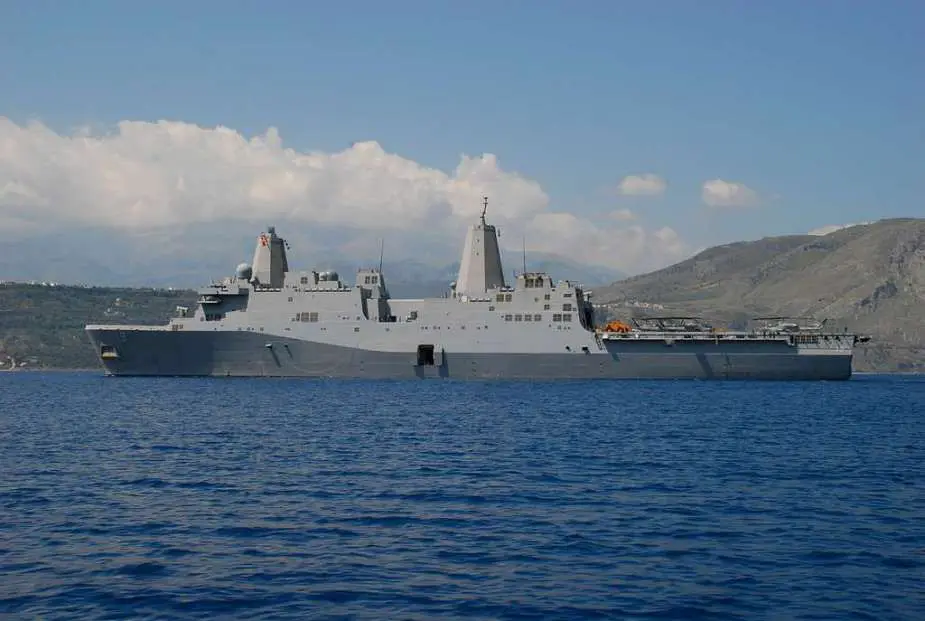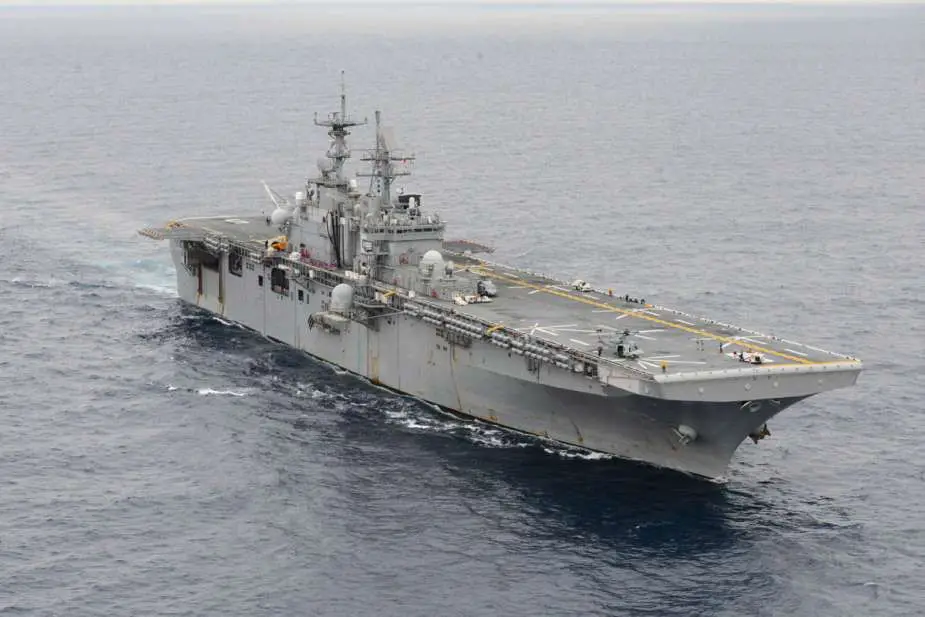Breaking News
Breaking News: Iranian Stealth Drones Spy on U.S. and Spanish Navy Ships in Persian Gulf.
On August 9, 2024, a video was released on the Internet showing surveillance of U.S. and allied naval vessels by Iranian stealth drones. The video, published by Iran's Mehr News Agency, displays high-resolution images of several key naval vessels currently deployed in the Persian Gulf.
Follow Army Recognition on Google News at this link

Iranian drone footage captures detailed images of a San Antonio-class amphibious transport dock (LPD) and a Wasp-class amphibious assault ship of the U.S. Navy, alongside the Spanish helicopter carrier Juan Carlos I, patrolling the Persian Gulf. (Picture source: Video footage Mehr News Agency)
The Iranian drone footage reveals a San Antonio-class amphibious transport dock (LPD) and a Wasp-class amphibious assault ship of the U.S. Navy, along with the Spanish helicopter carrier Juan Carlos I. The video, recorded by a squadron of four stealth drones, provides detailed real-time views of military equipment, including warplanes stationed on the decks of these vessels. The IRGC's capability to monitor and gather intelligence on such a scale is a stark reminder of the growing military sophistication of Iran’s forces in the region.
This development comes at a time of escalating tensions between Iran and Israel. The region has been on edge since the assassination of Hamas political chief Ismail Haniyeh in Tehran, an action widely attributed to Israeli intelligence operatives. Iran has vowed to retaliate against Israel, leading to increased concerns of a potential military confrontation. The assassination has further strained the already volatile relations between Iran and Israel, with both nations engaging in a war of words and threatening military actions. Iran's vow of retribution has raised alarms across the Middle East, with many nations preparing for possible escalations that could disrupt the broader region's security.
In response to the rising tensions, the U.S. Department of Defense recently announced an increase in naval deployments in the Persian Gulf. The move is seen as a direct countermeasure to Iran's growing military activities and its threats against U.S. allies in the region, including Israel. The increased U.S. naval presence is intended to ensure the security of maritime routes and to deter any potential Iranian actions that could destabilize the region. The deployment includes advanced warships and aircraft carriers capable of responding to a variety of threats.
The release of this drone footage by the IRGC could be interpreted as a signal of Iran's readiness and capability to monitor and, if necessary, confront U.S. and allied forces in the Persian Gulf. With tensions already at a high, this latest development underscores the fragile state of affairs in the region, where any miscalculation could lead to a broader conflict. As the situation continues to evolve, the international community watches closely, hoping for diplomatic solutions to prevail over military escalation.
The San Antonio-class amphibious transport dock (LPD) of the U.S. Navy is a versatile vessel designed to support amphibious operations, capable of transporting and deploying Marines, their equipment, and vehicles via air and sea. Equipped with advanced command and control facilities, the LPD can coordinate complex operations, making it a critical asset in projecting power and maintaining security in contested regions like the Persian Gulf. Its presence in the area underscores the U.S. commitment to ensuring the stability of maritime routes and supporting allied forces.

Archive image of U.S. Navy San Antonio-class amphibious transport dock LPD. (Picture source Wikimedia)
The Wasp-class amphibious assault ship, also part of the U.S. Navy, is essentially a small aircraft carrier designed to deploy a Marine Expeditionary Unit, including helicopters and vertical/short takeoff and landing (V/STOL) aircraft like the F-35B. The Wasp-class can launch large-scale amphibious assaults, provide air support, and serve as a floating base for a variety of military operations. Its capability to host both fixed-wing aircraft and helicopters enhances the U.S. Navy's operational flexibility in the Persian Gulf, particularly in a high-tension environment where rapid response is essential.

The Spanish helicopter carrier Juan Carlos I is a multipurpose amphibious assault ship and aircraft carrier, capable of operating both helicopters and V/STOL aircraft. It also serves as a platform for amphibious landing operations, capable of deploying troops, vehicles, and other equipment. The Juan Carlos I enhances Spain's ability to project power far from its shores and contributes to multinational efforts in maintaining maritime security. Its presence in the Persian Gulf alongside U.S. vessels signals strong allied cooperation in the region, especially in response to growing threats and the need for a robust naval presence.



























